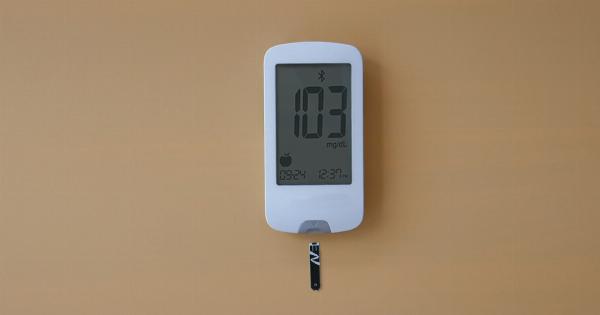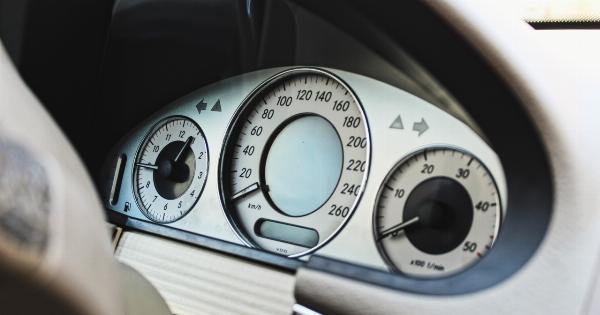High blood pressure, also known as hypertension, is a common health condition affecting millions of people around the world. It is a leading risk factor for serious health complications such as heart disease, stroke, and kidney problems.
Monitoring blood pressure is essential for the management and prevention of these risks. Traditionally, blood pressure measurements were taken at a healthcare facility, but with the advent of home blood pressure monitors, individuals can now conveniently monitor their blood pressure in the comfort of their own homes.
While home blood pressure monitors can be beneficial, there are several reasons why they may not always provide reliable readings.
Lack of Proper Calibration
One of the primary reasons for the unreliable readings of home blood pressure monitors is the lack of proper calibration. The accuracy of blood pressure measurements depends on the calibration of the device being used.
Calibration ensures that the measurements obtained are standardized and accurate. However, many home blood pressure monitors are not calibrated regularly or are not calibrated at all, leading to inaccurate readings.
This can be particularly problematic for individuals who rely solely on their home monitors for blood pressure management.
Poor User Technique
Another factor that can affect the reliability of home blood pressure monitors is poor user technique.
Achieving accurate blood pressure measurements requires proper positioning of the cuff, correct placement of the stethoscope or microphone, and following the instructions provided with the device. However, many individuals may not be familiar with the correct technique or may not follow the instructions carefully, resulting in inaccurate readings.
Additionally, factors such as movement, talking, or incorrect cuff size can further compromise the accuracy of the readings.
White Coat Syndrome
White Coat Syndrome refers to the phenomenon where individuals experience elevated blood pressure readings in a healthcare setting due to anxiety or stress associated with medical environments.
The use of home blood pressure monitors can be helpful in mitigating the effects of White Coat Syndrome as individuals can monitor their blood pressure in a relaxed environment. However, some individuals may still experience anxiety or stress, even in the comfort of their own homes. This can lead to falsely elevated readings, indicating a higher blood pressure level than what they would experience under normal conditions.
Inaccurate Averages
Home blood pressure monitors often provide an average of multiple readings taken over a period of time.
While this feature can be useful for identifying trends and patterns, it can also be misleading if the individual has inconsistent blood pressure readings. The accuracy of the average is dependent on the reliability of the individual measurements.
If there are significant fluctuations or errors in the readings, the average may not provide an accurate representation of the individual’s blood pressure levels.
Device Malfunctions
Home blood pressure monitors are electronic devices that can malfunction, leading to inaccurate readings. Factors such as worn-out cuffs, malfunctioning sensors, or improper functioning of the display can all contribute to unreliable measurements.
Regular maintenance, including proper cleaning and inspection of the device, is necessary to ensure accurate readings. However, many individuals may neglect maintenance or continue to use a faulty device without realizing the potential impact on the accuracy of their blood pressure readings.
Inconsistent Validation
Validation refers to the process of comparing the measurements obtained from a blood pressure monitor against a standard or reference method to determine its accuracy.
While healthcare facilities follow strict protocols for validating their blood pressure measurement devices, the same cannot be said for home blood pressure monitors. The lack of standardized validation protocols for home devices can lead to inconsistencies in accuracy across different manufacturers and models.
This can make it difficult for individuals to determine the reliability of their specific home blood pressure monitor without seeking professional validation.
Individual Variation
Blood pressure levels can vary significantly among individuals due to factors such as age, gender, overall health, and underlying medical conditions.
Home blood pressure monitors are not equipped to account for these individual variations or provide the personalized analysis that a healthcare professional can offer. Relying solely on home blood pressure monitor readings may lead to an incomplete understanding of one’s true blood pressure status, potentially compromising effective hypertension management.
Interference from External Factors
Various external factors can interfere with the accuracy of home blood pressure monitor readings. For example, electromagnetic interference from nearby electronic devices can disrupt the signals and cause errors in the measurements.
Additionally, factors such as temperature changes, poor cuff fitting, and excessive movement during measurement can also lead to unreliable readings. These external factors may be difficult to control or eliminate when using a home blood pressure monitor, further reducing the reliability of the measurements.
Lack of Professional Interpretation
Home blood pressure monitors provide numerical readings without the context and interpretation provided by healthcare professionals.
Interpreting blood pressure readings involves considering factors such as age, medical history, overall health, and the presence of other risk factors. Without the guidance of a healthcare professional, individuals may misinterpret their blood pressure readings and fail to take appropriate actions or seek necessary medical interventions.
Reliance on Self-Diagnosis
Using a home blood pressure monitor for self-diagnosis may lead to unnecessary anxiety or, conversely, a false sense of security.
While it is important to be proactive in monitoring one’s health, relying solely on home blood pressure monitors without professional medical advice or periodic check-ups may result in delayed diagnosis or missed opportunities for early intervention. It is crucial to consult with a healthcare professional for a comprehensive assessment of blood pressure and overall health.
Conclusion
Home blood pressure monitors have made it easier for individuals to monitor their blood pressure levels conveniently. However, caution must be exercised when relying solely on home blood pressure monitor readings for diagnostic or treatment purposes.
Factors such as poor calibration, user technique, white coat syndrome, inconsistent validation, and interference from external factors can all contribute to unreliable readings. It is essential to use these devices in conjunction with regular medical check-ups and professional interpretation to ensure accurate monitoring and management of blood pressure levels.































